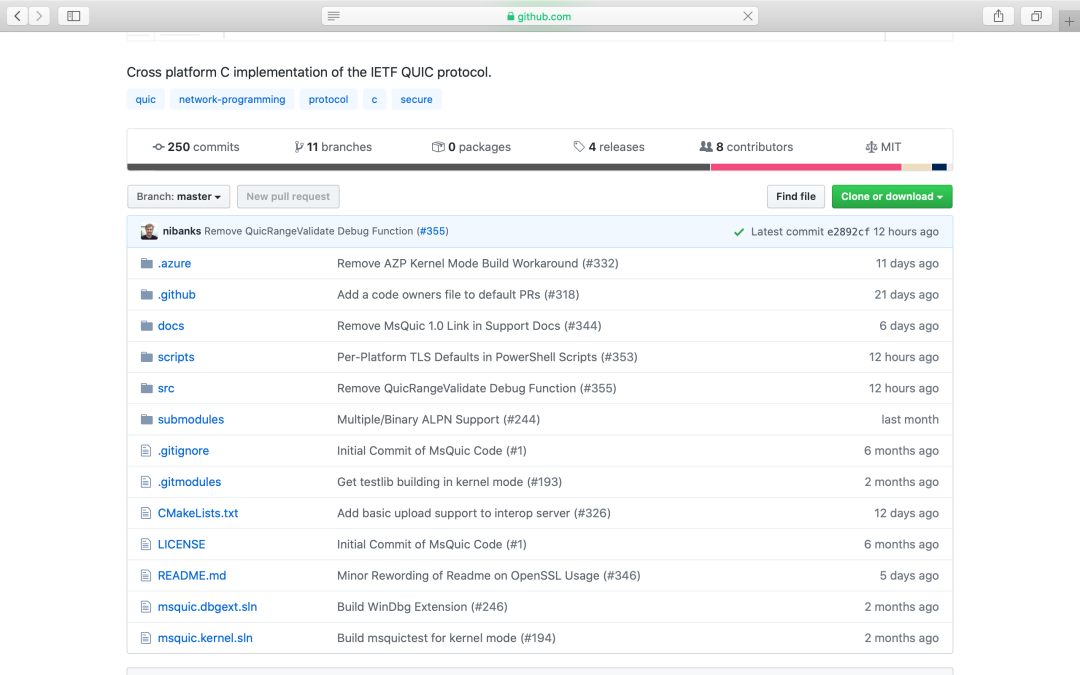QUIC is the TCP terminator developed by Google, and Microsoft has launched its own version of QUIC: MsQuic. Microsoft revealed that it is a user of QUIC. QUIC is the successor to TCP and is essential for HTTP/3; however, it has not garnered much interest outside of Google and Cloudflare.The full name of QUIC is Quick UDP Internet Connections, a protocol released by Google in 2013, designed to replace the cumbersome, OS-dependent TCP, thereby helping the internet scale and speed up. Both Google and Cloudflare are very interested in faster and more efficient internet interconnection technologies, and they have pushed QUIC into the IETF standardization process, making it a part of HTTP/3.Although QUIC has been integrated into the Chrome browser, observation agencies like W3Techs have found that only 3% to 4% of websites use this protocol.This is why Microsoft’s decision to open-source its implementation of QUIC as a user and advocate of QUIC has attracted significant attention!As usual, Microsoft has developed its own version of QUIC, naming it MsQuic. The post released by the company shows how it uses MsQuic, as follows:
Microsoft revealed that it is a user of QUIC. QUIC is the successor to TCP and is essential for HTTP/3; however, it has not garnered much interest outside of Google and Cloudflare.The full name of QUIC is Quick UDP Internet Connections, a protocol released by Google in 2013, designed to replace the cumbersome, OS-dependent TCP, thereby helping the internet scale and speed up. Both Google and Cloudflare are very interested in faster and more efficient internet interconnection technologies, and they have pushed QUIC into the IETF standardization process, making it a part of HTTP/3.Although QUIC has been integrated into the Chrome browser, observation agencies like W3Techs have found that only 3% to 4% of websites use this protocol.This is why Microsoft’s decision to open-source its implementation of QUIC as a user and advocate of QUIC has attracted significant attention!As usual, Microsoft has developed its own version of QUIC, naming it MsQuic. The post released by the company shows how it uses MsQuic, as follows:
-
Windows will include MsQuic in the kernel to support various inbox features. The Windows HTTP/3 stack is built on MsQuic.
-
Microsoft 365 is testing a preview version of IIS using HTTP/3 to reduce tail loss latency in the last mile. This is currently being actively used in internal environments.
-
.NET Core has built-in HTTP/3 support in Kestrel and HttpClient based on MsQuic. The experimental preview version of .NET Core 5.0 provides HTTP/3 support.
-
SMB in Windows is also prototyping to use MsQuic. QUIC brings several benefits to SMB, such as better internet reachability, secure connections based on industry-standard TLS, and server authentication with certificate validation. Best of all, this brings a completely different workload on MsQuic, enhancing the versatility of the transport protocol.
The post also reveals a bit about why Microsoft is tinkering with QUIC:
“MsQuic brings performance and security improvements to many important network scenarios. Our online services benefit greatly from performance enhancements (such as reduced tail latency and faster connection setups). Our connections will be able to seamlessly switch networks as they can withstand the impacts of IP address/port changes. This translates to a better user experience on our edge devices.”
QUIC is still in the IETF standard tracking process. Microsoft states that MsQuic is in a similar state of “ready for prototyping and testing” and promises to disclose more details about its implementation of this protocol soon.The IETF also believes that QUIC will be the foundation of the upcoming HTTP/3 standard, just as SPDY was the foundation of HTTP/2 and TCP was the foundation of HTTP/1.Link to the open-source MsQuic: https://github.com/microsoft/msquic ——END——
——END——